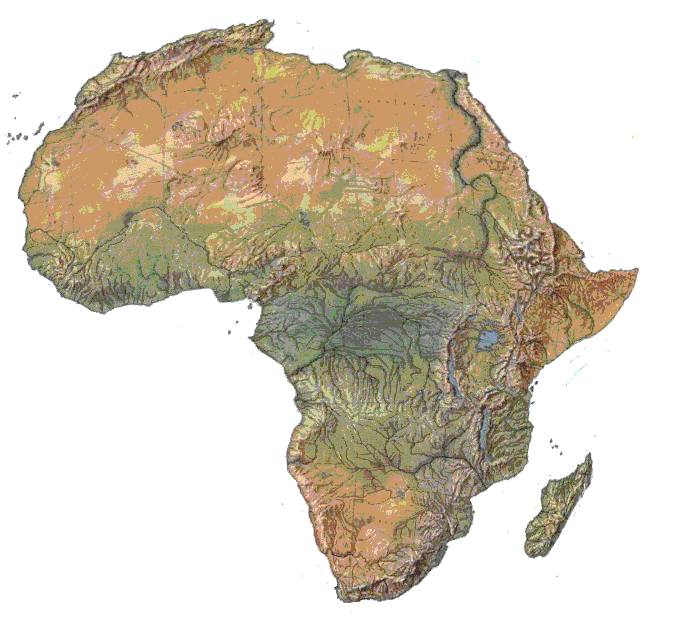
Rain brought on by Hurricane Dorian continues to pour in Freeport, Bahamas, Tuesday, Sept. 3, 2019. Practically parking over the Bahamas for a day and a half, Dorian pounded away at the islands Tuesday in a watery onslaught that devastated thousands of homes, trapped people in attics and crippled hospitals. (AP Photo/Tim Aylen)
As Hurricane Dorian continues to work its destructive way up the east coast of the United States, threatening coastal communities including the Geechie-Gullah settlements of the Carolinas, it has taken a while for me to process the devastation and loss of life that has already resulted from its recent assault upon The Bahamas. I’m not sure if there are any estimates on the loss of life that are anywhere near accurate, but whatever they are, we can unfortunately expect that number to grow as the rescue operations and the efforts to bring aid to the survivors there grow increasingly desperate.
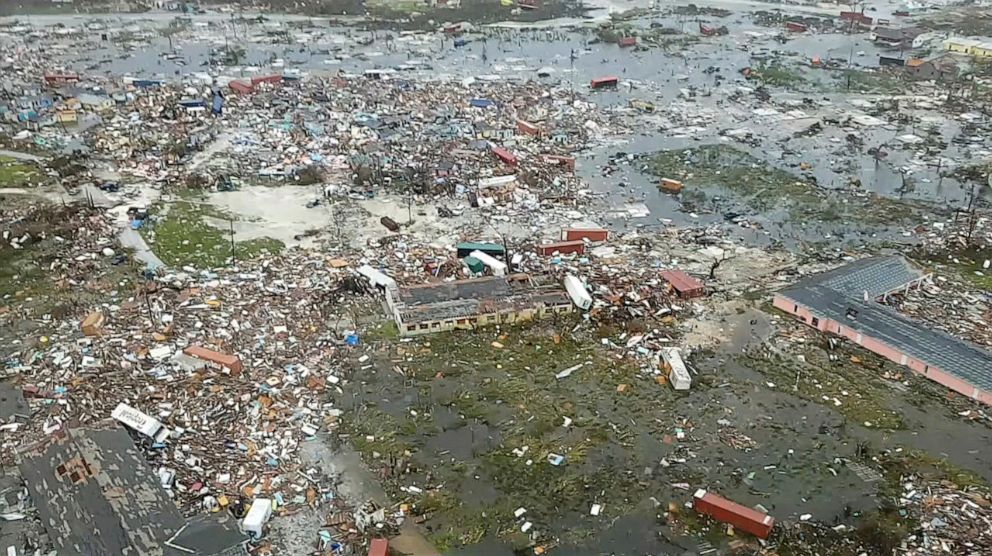 The storm spent the better part of two days battering the island nation, moving along quite literally at a snail’s pace (zero to one mile an hour), devastating areas of Grand Bahama Island and practically destroying much of the idyllic Abaco Islands, including the main coastal town of Abaco March Harbor. http://bahamaspress.com/2019/09/03/marsh-harbour-abaco-destroyed-by-hurricane-dorian/; http://bahamaspress.com/2019/09/02/main-city-town-of-abaco-marsh-harbour-completely-destroyed-in-the-aftermath-of-hurricane-dorian/
The storm spent the better part of two days battering the island nation, moving along quite literally at a snail’s pace (zero to one mile an hour), devastating areas of Grand Bahama Island and practically destroying much of the idyllic Abaco Islands, including the main coastal town of Abaco March Harbor. http://bahamaspress.com/2019/09/03/marsh-harbour-abaco-destroyed-by-hurricane-dorian/; http://bahamaspress.com/2019/09/02/main-city-town-of-abaco-marsh-harbour-completely-destroyed-in-the-aftermath-of-hurricane-dorian/
Bahamas opposition party leader Phillip Brave Davis has mobilized the resources he has to respond to the humanitarian crisis that has resulted from Dorian. http://bahamaspress.com/2019/09/03/opposition-leader-davis-mobilizes-hurricane-dorian-recovery-and-restoration-efforts-across-the-country/
I remember my honeymoon (I won’t tell you how long ago that was), when my new wife and I (we’re still together, thank you) took a short cruise that visited the Abaco Islands of The Bahamas. The excitement level was not high, but the relaxing nature of those peaceful islands gave me some idea of what paradise might look like to those of us whose lives are too often defined by the frantic comings and goings of what we like to call “the rat race”. It’s sad to think that those beautiful places may be no more, in part due to the negligence of those polluters, resource extractors and major global players who discount the catastrophic effects climate change is having on the planet by generating more frequent, far larger and deadlier storms such as this.
Expressions of grief and sympathy for the victims have begun to appear on Facebook. As usual, there is outrage but also a feeling of helplessness. Most of those who are expressing themselves at this time lack the individual means to actually help the people of The Bahamas, so we are largely restricted (or so we think) to expressions of grief and offers of “thoughts and prayers”.
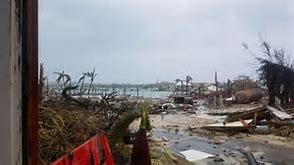 With our response to disasters like this, with so much devastation and loss of life, much like the outrage following each police murder of an unarmed Afrikan-American male (and nowadays, female), or the carnage that follows every mass shooting such as the massacres in El Paso, Dayton, Midland, Odessa, Las Vegas, Charleston and so many others, we rise up in indignation, we stage a mass action protest, we send a celebrity to the US Capitol or even to the United Nations, and then, after a while, the fervor fades and we return to our mundane lives, bracing ourselves for the next atrocity to incite us all in collective rancor. Some of us rise up, pump a fist in the air, and scream at the top of our lungs, “Never Again!” But rarely do we mount a coordinated response that puts in place a means to help ensure that such violations of our community, and of general human dignity, truly occur “Never Again”.
With our response to disasters like this, with so much devastation and loss of life, much like the outrage following each police murder of an unarmed Afrikan-American male (and nowadays, female), or the carnage that follows every mass shooting such as the massacres in El Paso, Dayton, Midland, Odessa, Las Vegas, Charleston and so many others, we rise up in indignation, we stage a mass action protest, we send a celebrity to the US Capitol or even to the United Nations, and then, after a while, the fervor fades and we return to our mundane lives, bracing ourselves for the next atrocity to incite us all in collective rancor. Some of us rise up, pump a fist in the air, and scream at the top of our lungs, “Never Again!” But rarely do we mount a coordinated response that puts in place a means to help ensure that such violations of our community, and of general human dignity, truly occur “Never Again”.
Perhaps a little historical refresher will help drive home my ultimate point.
Hurricane Katrina, September 2005
I remember how upset we all were in September 2005 after Hurricane Katrina, even before we learned of the first death from that disaster. There was a feeling of collective panic even as the hurricane was still churning in the Gulf of Mexico, taking aim at the city of New Orleans, Louisiana. After Katrina struck and devastated the city, Oprah Winfrey shared photographic and video accounts on her television talk show at the time, and people everywhere admitted to being forced to turn away from their television sets with tears in their eyes because they could not bear to continue to look at the images of destruction. Donations of money and supplies were collected and caravans were dispatched from across the country, in defiance  of the federal government’s blockade, to take supplies there and to send people to New Orleans to personally observe and report on the conditions and the government’s non-response. A community play was produced, “Katrina: A Whole Lotta Water”, which was performed in Baltimore and other cities by a group of dedicated actors who had no resources or name recognition but plenty of commitment and the will to put their energies and talents toward something, anything that might help awaken us to the increasing environmental and meteorological crises that awaited Afrikan people in particular if we did not all become more aware of the threats to our existence.
of the federal government’s blockade, to take supplies there and to send people to New Orleans to personally observe and report on the conditions and the government’s non-response. A community play was produced, “Katrina: A Whole Lotta Water”, which was performed in Baltimore and other cities by a group of dedicated actors who had no resources or name recognition but plenty of commitment and the will to put their energies and talents toward something, anything that might help awaken us to the increasing environmental and meteorological crises that awaited Afrikan people in particular if we did not all become more aware of the threats to our existence.
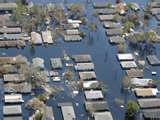 The following July, a major meeting of community organizations in New Orleans was convened to plan an organized response to the city and state governments’ handling of Katrina’s aftermath, which had included the “forced removal” of several communities, primarily Black, who had survived the hurricane as well as the permanent shuttering of public schools and housing projects in preparation for a major wave of privatized “disaster-gentrification” projects in New Orleans. I was invited by Elder Leon Waters, a local historian and community activist, to attend, and after two previous failed attempts to drive to The Big Uneasy shortly after the disaster, I finally made my way there in July 2006 for the meeting. There I was able to see the devastation first-hand (only without all the water, which had drained from the city but still left an orange line on many of the buildings, seven feet or more above street level, where the water had settled for two weeks). I also learned about plans for what would be the September 2007 Hurricane Katrina Tribunal, where an international panel of community judges would spend a week listening to the testimonies of weather experts, environmental activists, community organizers, Indigenous community leaders and citizens about the mistakes, misdeeds and crimes committed by authorities before the storm, as the storm was approaching, during the storm itself and in its aftermath. At one point, the panel of judges traveled to the Lower Ninth Ward, where they viewed what was left of that once-vibrant Black neighborhood, and, despite the fact that it had been cleaned up considerably in the two years since the hurricane, when they saw the destruction that remained, they all broke down and wept.
The following July, a major meeting of community organizations in New Orleans was convened to plan an organized response to the city and state governments’ handling of Katrina’s aftermath, which had included the “forced removal” of several communities, primarily Black, who had survived the hurricane as well as the permanent shuttering of public schools and housing projects in preparation for a major wave of privatized “disaster-gentrification” projects in New Orleans. I was invited by Elder Leon Waters, a local historian and community activist, to attend, and after two previous failed attempts to drive to The Big Uneasy shortly after the disaster, I finally made my way there in July 2006 for the meeting. There I was able to see the devastation first-hand (only without all the water, which had drained from the city but still left an orange line on many of the buildings, seven feet or more above street level, where the water had settled for two weeks). I also learned about plans for what would be the September 2007 Hurricane Katrina Tribunal, where an international panel of community judges would spend a week listening to the testimonies of weather experts, environmental activists, community organizers, Indigenous community leaders and citizens about the mistakes, misdeeds and crimes committed by authorities before the storm, as the storm was approaching, during the storm itself and in its aftermath. At one point, the panel of judges traveled to the Lower Ninth Ward, where they viewed what was left of that once-vibrant Black neighborhood, and, despite the fact that it had been cleaned up considerably in the two years since the hurricane, when they saw the destruction that remained, they all broke down and wept.
Years later, New Orleans has recovered, but many of its Black residents have not. Sent away to places as close as Baton Rouge and as far away as Houston, Atlanta, New York, Minnesota and the Pacific Northwest, many who had either fled the city or been “removed” during and after the storm never returned, either because they had been sent too far away, or because they could not afford to return, or because they feared another hurricane there would be their last. Whatever the reason, the city that was known as the major port that received and unloaded half of the goods entering the United States with a dedicated workforce of longshoremen and associated dock workers was now smaller, Whiter and somewhat more affluent, an objective that had been sought by many powerful White Southerners and misguided politicians long before Katrina paid its fateful visit to the Gulf.
In Katrina’s aftermath, public officials in Louisiana have made some astonishingly frank comments. “We finally cleaned up public housing in New Orleans. We couldn’t do it, but God did,” Rep. Richard H. Baker, a Republican from Baton Rouge, was quoted as saying in the Wall Street Journal last September [2005]. Former New Orleans City Council president Peggy Wilson, a candidate in the [2006] mayoral election, declared that the city should keep out “pimps” and “welfare queens,” while City Council president Oliver Thomas, who is African-American, said that public housing should be for people who work, instead of for “soap opera watchers.”
– from “Locking Out New Orleans’ Poor” By Bill Sasser, June 12, 2006, available at Spiegel Online, https://www.spiegel.de/international/after-hurricane-katrina-locking-out-new-orleans-poor-a-420880-2.html
Hurricanes Maria and Irma, September 2017
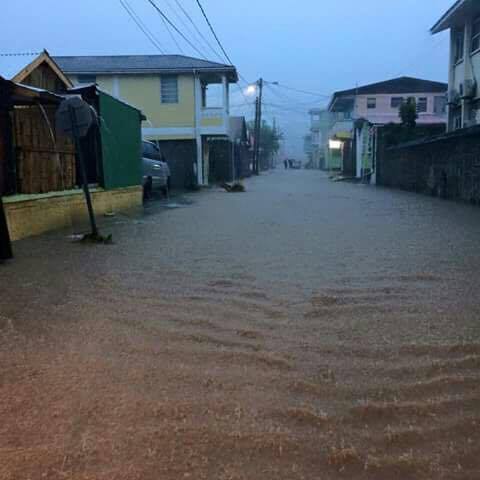
Point-A-Pitre, Guadeloupe, during Hurricane Irma.
I remember as recently as two years ago, when Category 5 Hurricanes Maria and Irma struck the Eastern Caribbean. Irma struck first, in early September, and laid waste to many communities in the British and US Virgin Islands (where friends of mine live), Guadeloupe (where another friend lives), Cuba, Ayiti and Puerto Rico, among other areas, before drawing a bead on the United States. According to a Wikipedia article (https://en.wikipedia.org/wiki/Hurricane_Irma):
The storm caused catastrophic damage in Barbuda, Saint Barthélemy, Saint Martin, Anguilla, and the Virgin Islands as a Category 5 hurricane. The hurricane caused at least 134 deaths: one in Anguilla; one in Barbados; three in Barbuda; four in the British Virgin Islands; 10 in Cuba; 11 in the French West Indies; one in Haiti; three in Puerto Rico; four on the Dutch side of Sint Maarten; 92 in the contiguous United States, and four in the U.S. Virgin Islands. Hurricane Irma was the top Google searched term in the US and globally in 2017.
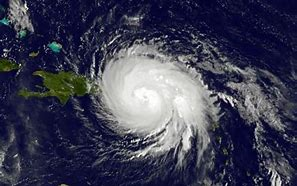
Hurricane Maria over Puerto Rico. (Source: Orlando Sentinel)
But Irma was evidently not enough. Maria came along two weeks later, dealing a double-blow to those islands already seriously weakened by Irma and laying waste to Puerto Rico. According to another Wikipedia article (https://en.wikipedia.org/wiki/Hurricane_Maria):
Hurricane Maria was a deadly Category 5 hurricane that devastated Dominica, the U.S. Virgin Islands, and Puerto Rico in September 2017. It is regarded as the worst natural disaster in recorded history to affect those islands and was also the deadliest Atlantic hurricane since Mitch in 1998. The tenth-most intense Atlantic hurricane on record and the most intense tropical cyclone worldwide in 2017, Maria was the thirteenth named storm, eighth consecutive hurricane, fourth major hurricane, second Category 5 hurricane, and deadliest storm of the hyperactive 2017 Atlantic hurricane season. At its peak, the hurricane caused catastrophic destruction and numerous fatalities across the northeastern Caribbean, compounding recovery efforts in the areas of the Leeward Islands already struck by Hurricane Irma. Total losses from the hurricane are estimated at upwards of $91.61 billion (2017 USD), mostly in Puerto Rico, ranking it as the third-costliest tropical cyclone on record.
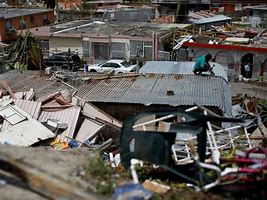
Some of the devastation from Hurricane Maria in Puerto Rico. (Source: ABC)
In the wake of these disasters, the response of the Trump administration was more uncaring and ineffective than that of the Bush administration after Katrina. US president Donald Trump claimed to have dispatched record amounts of aid to Puerto Rico which was mismanaged, but the enduring image of Trump’s visit to that US territory in which he tossed rolls of paper towels to the gathered crowd and portrayed himself as a savior still rankles many activists and government officials to this day. His ongoing Twitter war with San Juan mayor Carmen Yulin Cruz, and his most recent condemnation of the governor of Puerto Rico, Ricardo Rosello, have served to deflect attention from the failure of his administration to restore power in Puerto Rico for over a year. Puerto Rico has not been completely restored two years later, and many of the island territory’s Afrikan-descendant residents, United States citizens all, still have not recovered.
Meanwhile, Trump, in a continuing fit of willful ignorance and immoral defiance, states time after time that he has “never heard of a Category 5 hurricane” (despite having presided over four Category 5 hurricanes that struck the United States and Caribbean since he invaded the White House in January 2017) and that “no one has ever seen a Category 5 hurricane” despite the clear documented history that shows thirty-five Category 5 hurricanes in the Atlantic Basin since 1851, when records began (https://en.wikipedia.org/wiki/List_of_Category_5_Atlantic_hurricanes), all of which made landfall and impacted the Caribbean, Central or North America and the communities that lived there.
“Thoughts and Prayers” versus Committed Action
It’s increasingly clear that the overused cliché of “thoughts and prayers” has worn thin. When politicians used it earlier this year at public appearances in the wake of mass shootings, angry constituents yelled “Do something” at them. Television talk show hosts, journalists and commentators have taken to calling these “thoughts and prayers” expressions by politicians exactly what they are: empty proclamations and platitudes that are rarely, if ever, backed up by official action. A few perfunctory mentions of background checks and assault weapons restrictions in the wake of another mass shooting. Empty promises to institute civilian review boards in response to another incident of police brutality. “Thoughts and prayers”, along with an occasional theoretical concession to climate change activists as the devastation from another record-breaking Category 5 hurricane is documented. All of which are conveniently forgotten in short order. None of which results in concrete action from the representatives of the Powers That Be.
If Not Us, Who? If Not Now, When?
If elected leaders and official politicians are not ready to take concrete action to deal with these crises that destroy our communities (while largely leaving theirs intact to continue to enjoy the profits from weapons sales, the rewards from their dividends in resource-extractive industries and the protection of their ill-gotten gains courtesy of the police), and if the major corporations are not inclined to place limits on their own behavior that aggravates these conditions, then it is left to us, the People, to take what actions we can.
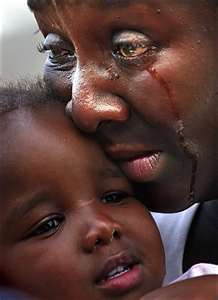 As I said above, most of us feel powerless to stop these disasters from befalling us and our communities or to assist in their recovery because we lack the individual means to stop climate change, prevent the next mass shooting or reduce the dependency on sometimes-corrupt (but, to be fair, not always) police, or even to send the kinds of aid to our people who are traumatized by these crimes against humanity that would truly help them recover. We temper our collective outrage by reminding ourselves that there is nothing any of us can do individually to make a real difference.
As I said above, most of us feel powerless to stop these disasters from befalling us and our communities or to assist in their recovery because we lack the individual means to stop climate change, prevent the next mass shooting or reduce the dependency on sometimes-corrupt (but, to be fair, not always) police, or even to send the kinds of aid to our people who are traumatized by these crimes against humanity that would truly help them recover. We temper our collective outrage by reminding ourselves that there is nothing any of us can do individually to make a real difference.
Individually, no. But collectively, yes.
There is a veritable alphabet soup of groups and activists who stake a claim to Pan-Afrikan righteousness and who insist, to a woman or man, that it is only through our unity that we can lift ourselves up as a people. Well then, doesn’t that unity start with each of us, and especially with the numerous organizations that insist that Unity Is The Answer? If we ever are able to get all the organizations that insist we must unite to actually do so (and I don’t mean that they must join each other or join one big organization, only that they should find a way to work together on common issues that impact us all), then it might be possible to put in place some real responses to disasters like this, responses that are led by the Grassroots Community and not dependent upon high-level government officials or captains of industry who too often are motivated by their own personal bottom line. Considering what our oppressors are constantly doing to the climate of the planet, and the impact it is having of increasing the number and severity of these types of storms, we can only expect more scenes like these in the future, or worse. The same can be said about each mass shooting, each police attack, each senseless criminal act within our communities. The time to plan a coordinated response to these disasters, from a Pan-Afrikan viewpoint and led by Pan-Afrikan organizers and activists who give a damn and have a pot to pee in, is now.
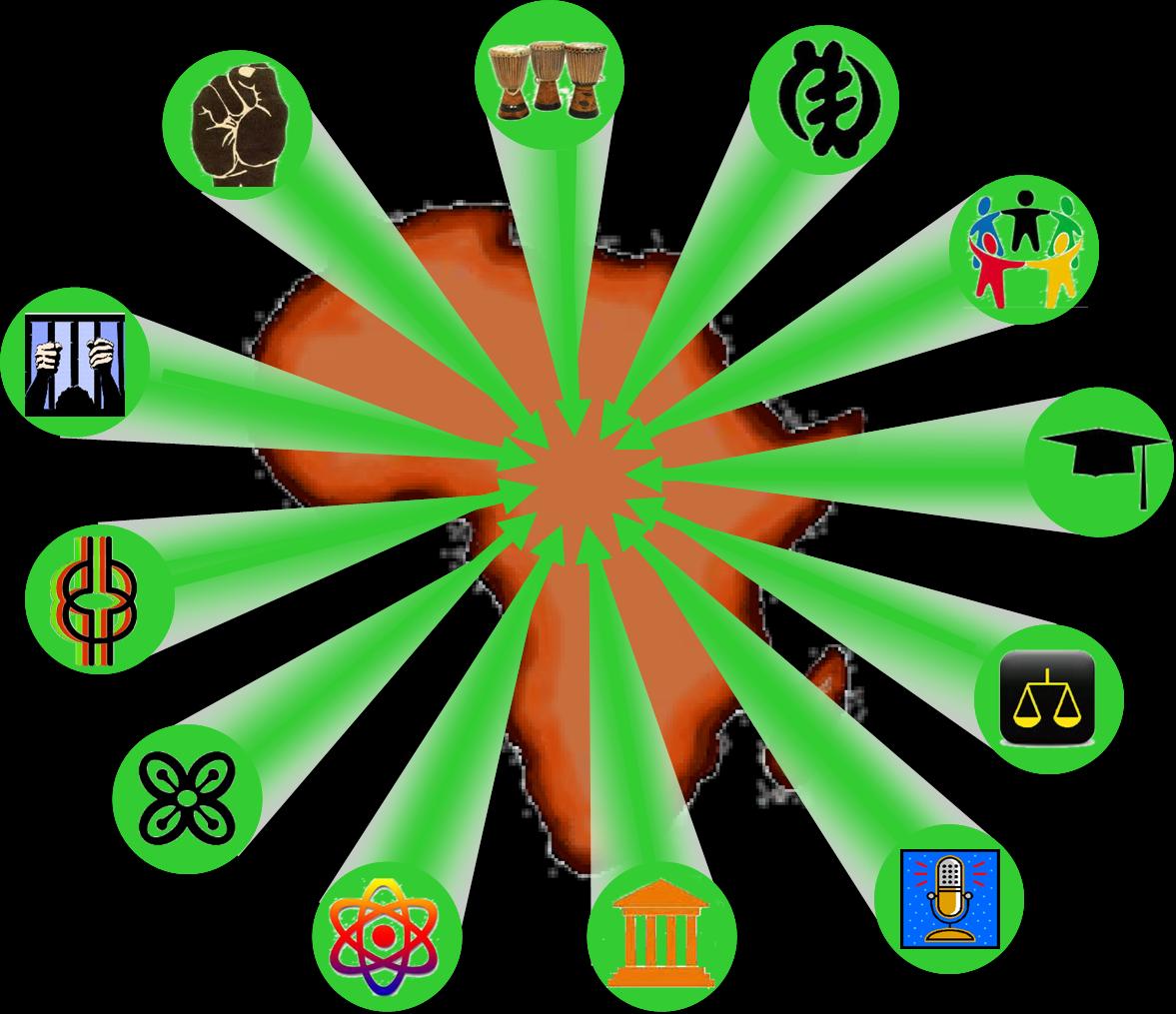 It’s not as if we have no resources to draw from. In fact, we have many. In some ways we behave like the donkey who died of thirst because he couldn’t decide which puddle of water to drink from. But the fact is that among us we have practically all the ingredients needed to make things happen for our people, if only we had the will to bring them together and act collectively. There are Lobbying Organizations and Think Tanks among us who are familiar with the local, state and federal legislative processes, and can apply political pressure on those bodies to act in the interests of Afrikan People. There are Direct Action Groups that excel at organizing mass protests at City Hall, the State House, the Capitol and in the streets of Downtown Anywhere, USA. There are groups of Artists who can get together and plan benefit concerts or create works of visual, musical or performance art to help drive home a message of inspiration, unity and uplift in a time of increasing danger. There are members of Pan-Afrikan Media who hold down radio shows, run entire radio stations, publish newspapers, write books and manage social media sites that can get information out to the People. There are Black Businesses who can provide services and goods to suffering communities and to organizations seeking to respond to crises. There are members ofthe Science Community: health practitioners, such as medical personnel, environmentalists, inventors and mental health professionals, who can respond to crises and see to the mental, physical and community well-being of our People. There are Lawyers who can fight the battles in court, from the repeal of draconian laws to the defense of activists and prisoners who are pursued and prosecuted for their organizing work. There are Grassroots Activists who are needed to get the people together and galvanize them to participate in Mass Actions and the day-to-day community healing that will be needed to recover from crises and to prevent the next ones. And there are Pan-Afrikan Educators, Organizers, Elders and Spiritual Leaders to help us keep all of our roles in historical perspective as we struggle to build the Unity that we all claim we want but have so far failed miserably to bring into existence. I won’t name these organizations, activists and concerned citizens here because I didn’t write this to call them out by name (I respect their work too much for that) and I really don’t need to. They know who they are and how they could participate in a Cooperative Coalition, but they are there and their input is needed to craft a collective solution, now.
It’s not as if we have no resources to draw from. In fact, we have many. In some ways we behave like the donkey who died of thirst because he couldn’t decide which puddle of water to drink from. But the fact is that among us we have practically all the ingredients needed to make things happen for our people, if only we had the will to bring them together and act collectively. There are Lobbying Organizations and Think Tanks among us who are familiar with the local, state and federal legislative processes, and can apply political pressure on those bodies to act in the interests of Afrikan People. There are Direct Action Groups that excel at organizing mass protests at City Hall, the State House, the Capitol and in the streets of Downtown Anywhere, USA. There are groups of Artists who can get together and plan benefit concerts or create works of visual, musical or performance art to help drive home a message of inspiration, unity and uplift in a time of increasing danger. There are members of Pan-Afrikan Media who hold down radio shows, run entire radio stations, publish newspapers, write books and manage social media sites that can get information out to the People. There are Black Businesses who can provide services and goods to suffering communities and to organizations seeking to respond to crises. There are members ofthe Science Community: health practitioners, such as medical personnel, environmentalists, inventors and mental health professionals, who can respond to crises and see to the mental, physical and community well-being of our People. There are Lawyers who can fight the battles in court, from the repeal of draconian laws to the defense of activists and prisoners who are pursued and prosecuted for their organizing work. There are Grassroots Activists who are needed to get the people together and galvanize them to participate in Mass Actions and the day-to-day community healing that will be needed to recover from crises and to prevent the next ones. And there are Pan-Afrikan Educators, Organizers, Elders and Spiritual Leaders to help us keep all of our roles in historical perspective as we struggle to build the Unity that we all claim we want but have so far failed miserably to bring into existence. I won’t name these organizations, activists and concerned citizens here because I didn’t write this to call them out by name (I respect their work too much for that) and I really don’t need to. They know who they are and how they could participate in a Cooperative Coalition, but they are there and their input is needed to craft a collective solution, now.
I’m all for thoughts and prayers for victims, but they must be backed up by action at some point. Political leaders who make empty promises of police accountability after an act of brutality or who offer only “thoughts and prayers” after natural disasters and assault-rifle massacres but take no actions to prevent the next one are hypocrites who only want the heat on them for their inactivity to be taken off. Let’s think of the people and pray for them, yes, because any real action begins with conscious thoughts and sincere, righteous prayer. But let us follow those “thoughts and prayers” up with action.
 And the easiest action of all is to get together and decide to do something about it, together. By ourselves, we accomplish little, which is part of the reason why so few of us even try. But enough of us should be familiar with the cliché “Together Everyone Achieves More” to know what we must do.
And the easiest action of all is to get together and decide to do something about it, together. By ourselves, we accomplish little, which is part of the reason why so few of us even try. But enough of us should be familiar with the cliché “Together Everyone Achieves More” to know what we must do.
Contact other organizations, even those with whom you may have had differences in the past, and agree to meet to work out some comprehensive, cooperative solutions. This is something that obviously must be done throughout the Pan-Afrikan World, since wherever you go around the globe where there are large numbers of people of Afrikan Descent, we are all beset by multiple “indicators of repression” (environmental racism, disaster non-response, political instability, human trafficking, police brutality and several others). But a grassroots response such as this will by necessity emanate from local community activists, organizations and concerned citizens on the ground where we live. In the process of organizing these localities and linking them with others who do the same, we will see that our issues are linked to each other by their sameness and the identification of the same oppressors, and that our resultant struggle as Afrikan People is the same one all around the world.
My organization (Sixth Region Diaspora Caucus, http://www.srdcinternational.org) will gladly get the ball rolling in Maryland by calling a Cooperative Coalition meeting this fall, probably on a Saturday afternoon in October or November. The Historic Arch Social Club in Baltimore is the likely location, but I’ll need to make the arrangements with their leadership to ensure the venue is available (and that I can afford to book it). Anyone who wants to discuss it or get more information on the Cooperative Coalition can feel free to contact me at cliff@kuumbareport.com, or even comment on this Web site or on Facebook. We’ll invite local and regional Pan-Afrikan organizations, activists and concerned members of the Grassroots Community to come and work on building the Cooperative Coalition, which we hope will lead to a Pan-Afrikan United Front one day. All it costs us is our time and our foolish pride.
